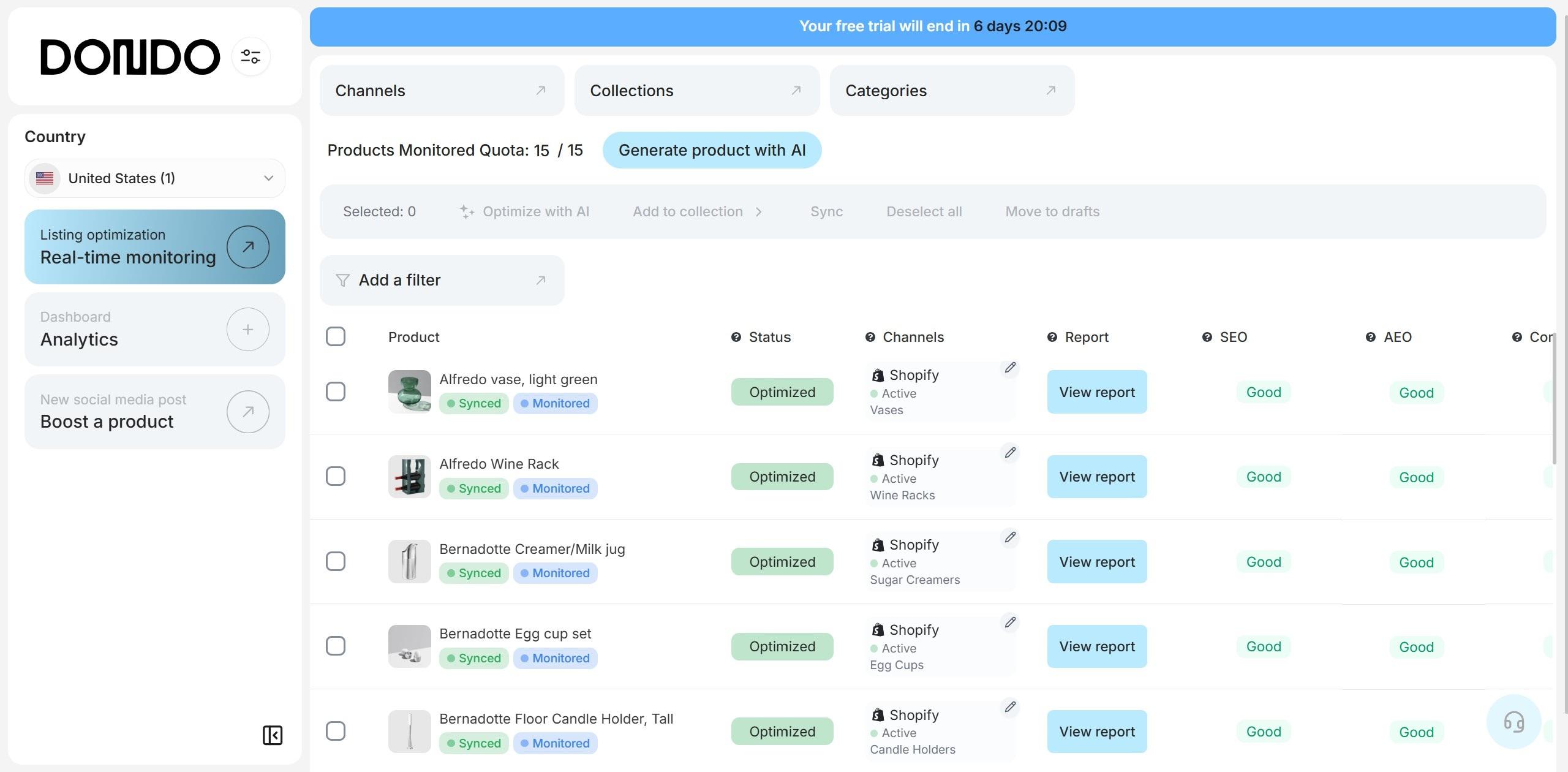The future of search: How to stand out in the AI era


How to prepare your brand for the era of Answer Engines
When was the last time you clicked on page 2 of Google results? Probably never.
Now imagine a world where you don’t even click at all, you just get the answer instantly.
That’s the future of search, and it’s arriving faster than most brands expect.
--
This shift is powered by Answer Engines (AI-driven platforms like ChatGPT, Google SGE, and Perplexity) that deliver instant responses instead of a list of links. To thrive in this new landscape, brands must embrace AEO (Answer Engine Optimization).
For e-commerce, AEO represents both a challenge and a massive opportunity. The question is: will your products become the answers customers find, or will they disappear from view?
Why AEO will define the next decade of e-commerce
Gartner predicts that by 2026 nearly a third of all searches will be handled by AI-driven answer engines. That means:
- Shoppers will see fewer options—maybe just 1 or 2 direct answers.
- Ranking on Google’s first page won’t be enough anymore.
- Brands that adapt to AEO now can win visibility previously out of reach.
In practical terms: instead of scrolling through multiple stores, a shopper might simply ask:
- “Which fabric is best for hot weather?”
- “Does this monitor work with a MacBook Pro?”
- “Is this moisturizer safe for sensitive skin?”
And whichever brand provides the clearest, most specific answer gets chosen.
What makes AEO different from SEO?
Traditional SEO rewards:
- Back links
- Domain age
- Keyword density
AEO rewards:
- ✅ Clarity → Short, direct answers
- ✅ Specificity → Addressing exact customer questions
- ✅ Conversational tone → Natural, human-like writing
- ✅ Relevance → Content adapted to user intent
This levels the playing field: in AEO, a small, agile brand can outperform an industry giant.
5 Ways to future-proof your brand for AEO
1. Focus on intent, not just keywords
Stop obsessing over keywords like “red running shoes.” Instead, think about how customers ask questions:
- “Are these running shoes good for long distances?”
- “What’s the difference between these shoes and trail running shoes?”
By answering intent-driven queries, you increase your chances of being featured in answer engines.
2. Turn customer feedback into content
Your customers are literally giving you the questions AIs look for, through reviews, social media, and support tickets.
- Example:
If multiple customers ask, “Does this serum work for oily skin?"
—Make sure that exact answer is in your description or FAQ.
3. Prioritize structured and scannable content
Answer engines extract meaning from structure. Use headings (H2, H3), lists, and short paragraphs.
- Example:
Q: How to care for this garment?
A: - Hand wash in cold water
- Do not bleach
- Air dry in the shade
4. Embrace conversational brand voice
AI platforms prefer natural, empathetic tones. Write as if you were replying to a customer’s message, not drafting a Wikipedia entry.
- Example:
Instead of: “Ergonomic multipurpose backpack.”
Try: “This backpack is perfect for long days, it has a special pocket for your keys, a sleeve for a 16-inch laptop, and even a slot for your water bottle.”
5. Leverage automation tools
Scaling this across dozens or hundreds of products can be overwhelming.
Tools like Dondo allow you to connect your store, extract your brand voice, and automatically optimize hundreds of product pages for SEO and AEO in minutes.

✨ Want to see how this works in action?
Visit our blog entry on Dondo here.
👉 Start preparing today for how customers will search in the future.
Sign up to Dondo and try it for free.
